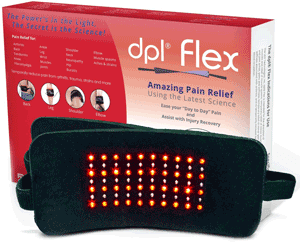Checking ingredients is a vital skill for anybody with acne prone skin, especially if you’re using something like a bar of soap.
Learning to recognise the different potential irritants and nasties hiding in your bathroom cabinet can save you from the inevitable redness and breakouts that result from applying chemical based acne treatments, soaps and cleansers which aren’t right for your sensitive skin.
If you ask me, the best way of ensuring you don’t suffer this fate is simple: Try the Caveman Regimen for 30 days, to prove you don’t actually need cleansers or products at all, then continue washing your face with nothing but nice cool water.
The second best way, however, is to choose products which contain as few ingredients as possible.
And for this, some people turn to soaps – especially those containing only natural ingredients.
Before we continue, a small rant about natural ingredients, if I may…
I spend a lot of time railing against pharmaceutical “treatments” for acne, and the plethora of chemical cleansers and irritating topical products available. Most of the time, they’re unnecessary at best and at worst they’re downright harmful (see Sodium Lauryl Sulfate for one example).
However, I’d just like to direct my innate anger at “natural ingredients” for a second and address a common misconception.
“Natural” does not mean safe, it does not mean non-irritating, it does not mean it’s better or worse than synthetic or man-made ingredients.
“Natural”, in fact, means “from nature”. That is no guarantee of anything other than the fact it’s been grown or harvested or picked or whatever.
Poison ivy is natural, but a soap made with poison ivy – while it could be correctly labelled “made with natural ingredients” – is unlikely to calm your inflamed skin.
Similarly, lemon juice is natural. But try applying neat lemon juice to your face and then tell me natural products are non-irritating (hint: don’t actually do this).
Coconut oil, while considered by a great many people to be an excellent moisturizer, can also be highly comedogenic.
The point, gentlemen, is that you should be using your own careful judgement and studying the ingredient list of each and every product you decide to apply to your skin. There is no substitute for doing your own research!
Choosing a bar of soap
With this in mind I decided to do a little soap test, to demonstrate the worth of some of these natural ingredients.
First of all, I ordered a bar of this Noble Formula Pyrithione Zinc Soap, because it’s specially formulated for those with inflammatory skin conditions like psoriasis, eczema and seborrheic dermatitis.
Zinc is well known for its anti-inflammatory properties, although science has so far demonstrated that zinc does not reduce acne when applied topically.
I used this soap for about a month, as a trial, and have to say that while I did find it calming for the skin and pleasant to use, I didn’t notice a huge effect on my mild seborrheic dermatitis. Perhaps if I had a worse case of seb derm I might have noticed improvement, but as it was, it’s just a good soap.
The reason? I figure it’s down to one of those “natural ingredients”, actually. Seborrheic dermatitis is caused by a yeast called Malassezia spp., just like pityrosporum folliculitis (another acne-like condition).
Malassezia overgrowth occurs in oily conditions, such as the overproduction of sebum which plagues those of us with acne and seb derm, because the yeast feed on the oil.
Adding any sort of oil to the skin – and this soap contains olive oil and emu oil – is usually a pretty big no-no.
Don’t get me wrong though, it certainly didn’t make my seb derm any worse, and did calm down some of the itching which is one of the most annoying things about this condition.
A better soap, made from trees and recommended by Grandpa
My favorite soap, however, is The Grandpa Pine Tar Soap. I trialled this one after the zinc bar as a comparison.
Pine tar soap contains, among its few ingredients, an extract from Pinus palustris tree – otherwise known as the Longleaf Pine tree found in the south east United States.
Pine tar has been used in soaps since our great-great-grandfathers were alive and it’s very, very good at calming irritated skin. It reduces irritation, is strongly antibacterial and anti-fungal, and importantly for sensitive skin types it won’t dry your skin out like the more chemical-based soaps.
Pine tar is also used in the treatment of a skin condition called psoriasis, which is where the skin overproduces skin cells and keratin, resulting in itchy, scaly plaques.
Sound familiar? Acne is also a skin condition which results from too much keratin and skin cells (because keratin is sticky and it sticks these skin cells together in clumps, so that they end up blocking pores when they slough off). Application of pine tar breaks up these clumps so pores stay clear.
Pine tar, therefore, acts against three of the causative factors of acne – inflammation, bacteria and blocked pores.
It turns out Old Grandpa’s not wrong folks. This soap was better, to my mind, than the zinc soap and less drying on the more sensitive areas of my face. No acne breakouts, no seb derm flareups. But then, I don’t really get any of these anyway these days.
And not only is it keratolytic, but this soap is one of the few which will leave you smelling like an actual man, rather than becoming just another of today’s perfumed, effeminate weaklings. If you can imagine for a second the smell of a burning pine forest – yeah, that’s how you smell.
Everyone knows that women are wildly attracted to lumberjacks, and so smelling like you’ve just decimated an area of woodland will definitely give you a head start with the ladies.
That’s my kind of soap. If you do choose to use soap make sure to check out every ingredient it contains, as so many soaps – natural and otherwise – can do more harm to your acne-prone skin than good.


